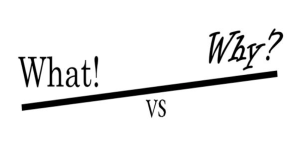I’m often struck by people’s initial approach to innovation problems. Very often, the initial impulse is to find out what exists today, and then develop new ideas based on the existing, underlying construct. This will be a great way to improve existing products and services, but it will not be as useful if the goal is to create an experience that will truly disrupt the market. For this type of problem, it is more important to go beyond learning WHAT a market is doing, to understanding WHY it is behaving that way. I wrote about this in detail in a chapter is the book Disrupt Together: How Teams Consistently Innovate. Here’s the idea in summary.
To illustrate what I’m talking about, I often use the example of a company that makes toasters. If the company wants to improve their toasters, they can find people who own toasters, and ask them WHAT they like, dislike, and wishes for the toasters to be improved. This will most certainly yield great ideas for how to improve toasters.
But what if you want to disrupt the toaster market? To do that, you would need to understand WHY people like or dislike current toasters. This will yield insights that may lead to the development of bread toasting appliances that may not resemble current toasters at all. Better yet, if you find out WHY they are using toast in the first place, you may find that you can develop an entire new category of products. What if they are seeking a crunchy carbohydrate source to go with a sandwich? Or what if they are seeking something edible that holds the insides of a sandwich together without getting soggy? At this point, you may even move beyond making better toasters, or even better toast, to develop all sorts of new food ideas that enhance the experience of eating that may be more fun or convenient than current options.
All of this may seem obvious, but think about what happens in your own company. What would happen if you set out to learn something that didn’t lend itself to quantifying existing benchmarks? How would a conclusion that lived outside the constructs of what your company can currently influence? It’s easy to justify learning WHAT exists in the market, or WHAT customers think about current offerings or existing categories. The conclusions are very tangible and easy to categorize. It’s much more difficult to justify something where the conclusions are much more fuzzy. However, truly valuable sources of competitive advantage are often created by developing new solutions for WHY your market is behaving like it is.

